Along the Beartooth Highway
The Scenic Route to Yellowstone...
There’s something about riding on the open road that’s the epitome of the American Experience.
Just think of song lyrics and titles: “Hit the Road, Jack,” “Two for the Road” or the above quoted “Born to be Wild.” Bing Crosby and Bob Hope made seven road movies, including The Road to Morocco and The Road to Singapore. Jack Kerouac wrote On the Road. Or Peter Fonda – now a Paradise Valley resident -- jumping on his chopper motorcycle and careening down the highway in Easy Rider.
Even with gasoline around $3.00, something drives us to hit the road. When you get that itch, there is no better place to head than to the Beartooth Highway, that somewhat long (66 to 68.8 miles depending on whose estimate you use) and very winding paved road that lies between Red Lodge and the northeast entrance to Yellowstone National Park.

It’s one of the highest elevation roads in the continental United States and has received many accolades over the years including “All-American Road,” “the most beautiful highway in the world” and “National Scenic Byway.” The Forest Service also recently designated it as the “Beartooth Scenic Byway” under its Scenic Byway Program.
Whether you call it the Beartooth Highway, US 212, Montana Forest Highway 59, the Red Lodge-Cooke City Highway or Wyoming Highway 4, you will call it beautiful.
The road travels from Yellowstone National Park to the Montana town of Red Lodge with the mid-section of it falling on the Wyoming side of the border. Traveling east, the first 8.4 miles lie within Montana, passing through the communities of Silver Gate and Cooke City and over the Colter Pass (elevation: 8,200 feet). The next 34.7 miles fall within Wyoming and climb from the Yellowstone River’s Clark Fork over the Beartooth Plateau to the Western Summit at 10,947 feet above sea level. The last 23.7 miles of the highway are in Montana. At the end, you descend from the Beartooth Plateau into the Rock Creek Valley and Red Lodge.
What makes the Beartooth Highway so exciting is that while it’s paved, it is very wild—surrounded by the Custer, Shoshone and Gallatin National Forests. Drive it at night and you’ll only have the stars to navigate by—no bright city lights here. And because it is so high up, it’s not uncommon to start out on a hot summer day with temperatures in the 90s at Red Lodge and then have to pull on your fleece pants and jacket at the top because the temperature has plummeted 30 degrees.
This heavenly highway offers everything from a lush forest at its base to alpine tundra at higher elevation. It also sports views of the Beartooths—for which it is named—as well vistas of the Absarokas and the rest of the Absaroka-Beartooth Wilderness. Much of the Beartooth Plateau, which it travels through, is at more than 10,000 feet. The Beartooths are one of the highest mountains ranges in the United States with 20 peaks, which exceed 12,000 feet in elevation. The land is wild and so is its wild life. Drive along the Beartooth Highway and you may see mountain goats, moose, black bears, grizzly bear, marmots, and mule deer. One mother of a California family who recently journeyed there and blogged her comments said, “It felt as if we were driving to heaven itself!”
Another thing that makes the highway precious is that it’s only officially open from Memorial Day until Labor Day (although you can probably squeak in a drive there through early October, provided there hasn’t been any substantial snowfall. You can always hop on a snowmobile during the winter months).
You could say it became doubly precious this year after mudslides in May 2005 destroyed 13 sections of pavement and kept the road closed all summer. It re-opened last spring. (The closure definitely gave meaning to the term “road less traveled.”) Call 800-226-7623 to verify road conditions.
History of This Highway
Red Lodge resident Dr. J.C.F. Siegfriedt was one of the first to champion the building of a “high road” which would connect Red Lodge and Cooke City. Funds for the project were secured in 1931 and the Beartooth Highway officially opened in 1936 after approximately four years of construction. The highway was and is considered an engineering marvel. For example, the 4,000-foot descent into Rock Creek Canyon and into Red Lodge features 7.5 miles of road at more than a six percent grade. Building a road that steep required quite a bit of creative engineering. It’s also amazing that the highway was built in such a short period of time as well as within budget.

While the paved road opened the way to vehicular travel to and from the northeastern edge of Yellowstone, people have traveled through the Beartooths for at least 12,000 years before that. Native American Indian tribes, including the Sioux, Cheyenne, Arapahoe, Crow and Shoshone, made their way through here. Beginning in the early 1800s, they were joined by mountain men such as John Colter, Osborne Russell and Jim Bridger, who explored, trapped and traded in this area. Next came the miners panning for gold.
One of the earliest organized trips across the Beartooth Plateau was organized by Lt. General Philip H. Sheridan of Civil War fame in August 1882. The Beartooth Highway roughly follows the path of that expedition.
Most travelers start at either end of the highway—either from Yellowstone National Park’s northeast entrance passing through the communities of Silver Lake, Colter Pass and Cooke City —or at the Beartooth’s other terminus, Red Lodge.
Those coming from Wyoming can also access the Beartooth Highway via the Chief Joseph Scenic Highway. Or you may take a side trip onto the Chief Joseph. Like the Beartooth Highway, the Chief Joseph features the same breathtaking beauty and opportunities for wildlife viewing. In addition, it gives you a chance to see the land where part of the legendary flight of the Nez Perce led by Chief Joseph (the highway’s namesake) took place. Chief Joseph tried to lead 800 of his people to Canada. They were trapped by the United States Army 40 miles from the Canadian border in Montana.
The Two “G’s” – Geography and Geology
The Beartooth mountains are part of the Absaroka range and the approximately 944,000- acre Absaroka-Beartooth Wilderness.
Some experts believe that the term “Absaroka” is derived from the Crow Nation’s name for its people—“Absarkoee,” which roughly means the “bird people” or “children of the large-beaked bird.” The Crows also named the sharp spire that juts from the Beartooth Plateau “Na Piet Say,” which translates into “bear tooth.” Travelers can see this jutting tooth from the highway.
Geologists marvel at the Absaroka-Beartooths because of their rare minerals. Most of the exposed rock that makes up the range dates back more than three billion years and are some of the oldest rocks found on the earth’s surface. The northern part of the range, where the Beartooth Highway runs, features jagged peaks, glacier-gouged basins and steep-walled canyons.
Recreation
Although the Beartooth Highway features a harsh climate, it is a recreationist’s paradise.
Depending on the depth of the winter snowpack, skiers hungering for turns can ski off of the highway through July.
Into fishing? With 944 lakes and nine major drainages, the Beartooths are an angler’s dream.
It’s also a mecca for hikers because of its proximity to the Absaroka-Beartooth Wilderness.
Hunting is also popular and many of the local lodges can help arrange trips. For example, the Big Bear Lodge in Cooke City is a full-service outfitter (through Stillwater Outfitters). It offers summer pack trips and day rides for fishing, horseback riding and sightseeing as well as hunting trips for elk, moose, mountain goat, big horn sheep, mule deer and antelope. (Visit http://www.montanabigbearlodge.com for more information.)
The Beartooth Highway is definitely one case where the journey is equal to your destination. In fact, it’s a once-in-a-lifetime pilgrimage that you and your family may decide to take every year because it’s so special.
Silver Lake
John L. Taylor founded Silver Lake after coming to work on the Beartooth Highway in the 1930s. According to his daughter Mrs. Taylor Eblin, he named it Silver Lake because of the “silver haze,” which seemed to hang over the mountains.
Lodging: There’s not much to Silver Lake, which makes it a calm and restful place to stay. It lists only five lodging places (one hotel-motel, a single bed and breakfast and three cabin places). Local guides recommend the Pine Edge Cabins (406-838-2371).
Cooke City
In its earliest days, Cooke City was an unnamed miners’ camp. In 1882, it was named Cooke City in honor of Jay Cooke Jr., a Pacific Railroad contractor who promoted development of this area as well as a railroad link to the town. (Although he promised it, the railroad actually never came to Cooke City, but the name stuck.)
In the winter with the Beartooth Highway closed, the only way to reach Cooke City is through Yellowstone National Park, which could explain why its winter time population is 100 hardy residents versus the 300 who live there in the summer months.
Lodging: It sports 14 motels, hotels and lodges, including The Alpine Motel (888-838-1190) as well as your standard Super 8 of Cooke City (877-338-2070). Many accommodations are only open for the summer so book ahead or at least find out their opening and closing dates! For campers, there are three adjacent National Forest Campgrounds: The Chief Joseph Group Campground, The Colter Campground and the Soda Butte Campground (all available at 406-838-7375).
Food: Beds and Buns for “superb, huge sandwiches” and “over-the-top cheesecake”. Other good options include the Beartooth Café and the Grizzly Pad Grill.
Red Lodge
Red Lodge got its start as a coal mining town supply coal to the Northern Pacific Railroad in the late 1890s. When its West Side Mine closed in 1924 followed by the Depression and Prohibition, the town offset economic ills through illegal bootleg liquor, labeled “syrup,” which was and marketed as far away as Chicago and San Francisco, according to Red Lodge’s web site. Today Red Lodge is better known as a tourist destination because of its proximity to the Beartooth Highway, but also because of its downhill ski area (located six miles from downtown) and abundant outdoor recreation (hunting, fishing, downhill and cross-country skiing, golfing, mountain biking, hiking).
Lodging: It features seven motels, four condominiums, and historic hotel, bed and breakfasts and furnished guest homes. If you’re into your creature comforts as well as a little history stay at the Pollard Hotel (406- 446-0001) where Buffalo Bill and Calamity Jane have visited. For more humble digs, seek out the “sincere hospitality” of the Yodeler Hotel (406-446-1435). Red Lodge also features two private campgrounds: KOA-Red Lodge at 406-446-2364 or Perry’s Campground at 406-446-2722, with camping also available at nearby National Forest campgrounds. The Painter’s Outpost is an RV park about six miles south of Red Lodge and can be reached at 307-527-5510.
Dining: According to the local Chamber of Commerce, Red Lodge (population: 1,875) has more restaurants per capita than any other community in Montana. The Pollard Hotel probably serves up the most gourmet meals in town, but also check out the Bear Creek Saloon & Steakhouse (winner of the Taste of Red Lodge three out of four years) and Bogart’s.
For a more detailed listing of lodging and dining for Silver Gate, Cooke City, and Red Lodge, consult the Visit Montana Web site at visitmt.com.
~ Jenny C. McCune has traveled Montana’s scenic routes for the past 10 years by bicycle and by car. This summer she’s taken on a new challenge—racing on an all-women’s bicycle race team called Team Delphine and hopes to convince her team mates that the Beartooth Highway would be a good training ride.

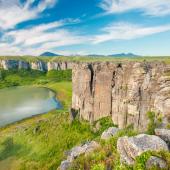
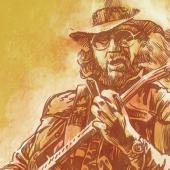
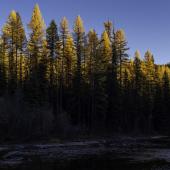
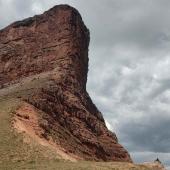
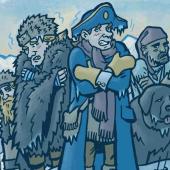
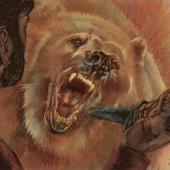


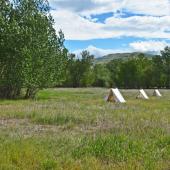
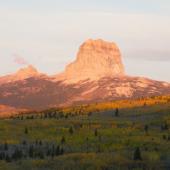

Leave a Comment Here